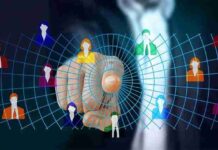
I have attended multiple conferences and heard about Artificial Intelligence, Metaverse, and many latest trends in technology.
Large language models like Open AI Chat GPT have become the most discussed topic.
According to the 2022 Paychex Pulse of HR Survey, HR technology tools help HR leaders to streamline tasks and manage new and ongoing responsibilities more efficiently.
In the same survey, half of the respondents reported that HR technology has helped improve operational efficiency and simplified payroll and benefits management.
Technological advancement in HR is a breakthrough in several aspects. First, it can improve the employee life cycle within an organization to a different level. Organizations adopting technology in various phases of the employee life cycle have created a differentiating value for employees.
Chatbots, virtual reality and assistants are leveraged by organizations differently in all critical phases of the employee life cycle- attracting, recruiting, developing, engaging and retaining.
Attract
Gone are the days when employees had to position themselves and create a value proposition through their profile, interactions, and conversations. These days organizations have to equally create brand equity and value to attract the multigeneration workforce. Organizations are investing in employer branding and building a strong employee value proposition.
They position themselves as desirable employer showcasing their culture, people practices and policies. They create world-class websites and attractive brand narratives and are socially active on Glassdoor, Ambition box and LinkedIn. In this era of the talent war, every organization wants to be the talent magnet attracting and hiring the best talent on board. Hence, organizations must be digitally progressive and advanced in creating, building and sustaining their brand equity among potential talent.
Recruit
Organizations are leveraging Artificial Intelligence-based tools to screen resumes, save time and improve accuracy. Tools are helping in uncovering hidden patterns in the profile of the candidate. The AI tools help assess organization and role fitment.
During these times of working from home and anywhere, organizations leverage automated video interviews involving candidates interviewed through artificial intelligence, which requires them to record themselves on an interview platform, answering questions under time pressure.
The AI developer platform submits the interview and analyses candidates’ visual (smiles) and verbal (e.g., tone of voice) nuances as a next step. Finally, the platform processes a report with an interpretation of the candidate’s performance.
Develop
Development within organizations has become learner-focused. Every individual is looking at their individual learning needs, and organizations must cater to those unique needs through curated programs.
Apart from face-to-face intervention, organizations are making learning accessible through the company’s mobile app. They focus on bite-sized modules and emphasize the learning themes emerging from the need analysis.
Talent development and succession have taken the form of a talent marketplace. An individual can look at various internal roles and skills required as well as projects available within the organization to take an opportunity of working on stretched assignments. The talent marketplace is an open market to look at skills taxonomy and focus on one’s skills as per the destination role.
Engage
Employee engagement requires high touchpoints. Apart from multiple initiatives by HR every month, it is essential to create an eco-system where information is accessible and readily available. Several organizations have chatbots for employees where they can get their queries resolved and get answers to all their questions.
The tools used for employee engagement surveys have evolved, and the insights and results are highly comprehensive. These tools have also made organizations very independent, as managers can access and disseminate the report among the team.
According to Gartner, the number of companies investing in AI increased by 270% between 2015 & 2019. As a result, the global AI market will be valued at over $ 136 billion in 2022 and is estimated to grow by 38% in 2023. By 2030, it will reach $ 1.81 trillion.
While technology is becoming a catalyst in HR, what can organizations do to harness and optimize any form of digitization? Like any other change, technology brings change within the organization. Hence, a few pivots to be thoughtful of while bringing any technological disruptions are-
- Context of the Organization– Metaverse, virtual tours, AI etc., are the buzzwords. Several technologically advanced organizations have either initiated or adopted these tools. However, before any digital disruption, it is essential to look at the need, requirements and maturity of the people and culture of the organization. Organizations should take a step back and reflect on the technology market. Technology is the means to solve business problems and enable HR initiatives and processes. Organizational maturity also had to be considered while experimenting and launching technology. While organizations are keen to advance digitization, it is essential to check in on the digital mindset of the people. Technology is not about shifting from manual to automated or complex to simple but also about significant mindset shifts. The mindset shift can only occur if technology brings simplicity, solves business problems, and enhances the overall employee experience.
- Business Leader Driving Technology Adoption- A leader and business function head should lead technology in an organization. They are the people who are close to reality and have proximity towards the ground challenges, and once they become the driver of adopting technology, the trust and conviction of people strengthen. Organizations should create a sense of urgency and cascade it further with the help of high-potential managers. Managers are the key people in building and enhancing the culture of digital transformation. Several organizations involve business leaders through road shows, town halls, projects and live demonstrations of digitization tools among employees on learning, performance assessment and development. It is inevitable for an organization to be agile and bring systemic digitization rather than doing this in a silo.
- HR is a Partner and Not an Owner- While bringing HR transformation, a lot comes on the shoulders of HR. Bringing learning software, performance assessment tools, hiring digitization, and engagement tools become a responsibility and ownership of HR. Later, driving these processes through digital tools also becomes the onus of the HR team. Launching a learning app is a subset of building a learning culture. HR and the entire organization, especially the leaders and managers, must significantly contribute to strengthening the learning culture. Even if we have the best performance evaluation tool, leaders and managers need to give regular feedback and leverage the instrument in providing regular feedback and progress of the team; otherwise, the effort of bringing digital transformation goes futile.
Organizations must have clarity on what to measure and what they measure while building a digital workplace. Technology enables and facilitates decision-making.
It does not replace human decisions. While looking at data and analyzing it, it’s crucial to ask the right questions, such as who will leave and when?
Where are our capabilities compared to competitors, and what skills and talent are needed? Such questions allow us to make informed decisions.
Every organization should avoid getting into fear of missing out and adopting digitization as per their need and the organization’s life stage.








